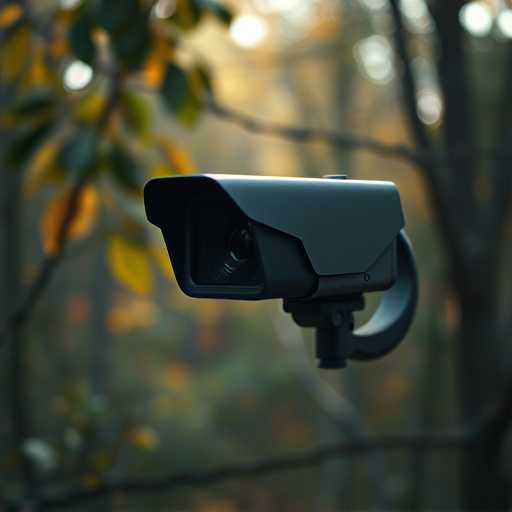RF detectors are crucial tools for identifying hidden cameras in homes, especially nanny cams. To ensure privacy-sensitive areas like bedrooms and bathrooms remain secure, homeowners should understand RF technology and scan for electromagnetic signals during setup. Effective nanny cam placement involves strategic planning, avoiding obvious spots, and maintaining proper calibration of RF detectors to minimize false alarms. Discreet placement in high-traffic areas and regular testing are key to successful and reliable surveillance using Nanny Cam Placement Tips Home.
Uncover the secrets of hidden camera detection with our comprehensive guide. Learn how RF detectors play a pivotal role in identifying nanny cams, ensuring your home’s safety and privacy. We provide a detailed tutorial on strategic Nanny Cam Placement Tips for discreet surveillance. From understanding RF technology to avoiding common installation pitfalls, this article equips you with all the knowledge needed. Discover the art of choosing optimal camera locations and master testing techniques for accurate detector performance.
- Understanding RF Detectors and Their Role in Camera Detection
- Preparing Your Home: A Step-by-Step Guide to Safe Nanny Cam Placement
- The Art of Discretion: Choosing the Best Location for Hidden Cameras
- Testing and Calibration: Ensuring Accurate Detector Performance
- Common Mistakes to Avoid During the Installation Process
Understanding RF Detectors and Their Role in Camera Detection
RF (Radio Frequency) detectors play a pivotal role in locating hidden cameras, especially in home security scenarios where nanny cams or surveillance devices are concerned. These detectors operate by scanning for electromagnetic signals emitted by radio-frequency identifiers within cameras. Understanding how RF technology works is crucial when it comes to effective camera detection, as it enables users to identify and mitigate potential privacy breaches.
When it comes to Nanny Cam Placement Tips Home, knowing that certain types of hidden cameras use RF communication can significantly enhance security measures. By employing an RF detector during the setup process, homeowners can ensure that any such devices are not present in areas where privacy is paramount, such as bedrooms or bathrooms. This proactive approach ensures a safer and more secure living environment.
Preparing Your Home: A Step-by-Step Guide to Safe Nanny Cam Placement
Before placing any nanny cams, it’s crucial to prepare your home for safe and discreet installation. Start by identifying potential locations where a hidden camera could provide valuable surveillance, such as near entryways, in hallways, or within child-frequented areas like playrooms or kitchens. Ensure these spots offer clear lines of sight without obstructing any windows or furniture, which could impede the camera’s view.
Next, assess your home for potential interference or blind spots that might affect signal strength and coverage. This includes checking for large metallic objects, thick walls, or other structural elements that could interfere with the radio frequency (RF) detector’s sweep. To ensure optimal performance, consider repositioning furniture or rearranging decor to allow for unobstructed placement of both the camera and its receiver.
The Art of Discretion: Choosing the Best Location for Hidden Cameras
When it comes to installing hidden cameras, discretion is key. The best location for a nanny cam or any home security camera should be both strategic and unnoticeable. Think about high-traffic areas where potential intruders might not immediately suspect surveillance—a clever spot near a door handle, inside a bookcase, or even attached to a pet’s collar can all serve as excellent Nanny Cam Placement Tips Home.
Avoid obvious choices like directly above doors or windows, as these are the first places people look when trying to avoid detection. Instead, opt for creative angles and hidden locations that blend in with the environment, ensuring peace of mind without raising suspicion.
Testing and Calibration: Ensuring Accurate Detector Performance
Testing and Calibration are essential steps in ensuring your RF detector accurately locates hidden cameras, especially Nanny Cams strategically placed around your home. Regular calibration ensures the device is attuned to the specific radio frequency bands used by these covert cameras. It’s a vital step that can’t be overlooked—much like tuning a radio to find a particular station.
Imagine your detector as a sophisticated listener, and calibration is training it to hear only the ‘music’ of hidden cameras. Through this process, you minimize false alarms and ensure every detected signal comes from an actual Nanny Cam. It’s crucial for peace of mind, knowing your home security system functions optimally, keeping prying eyes at bay.
Common Mistakes to Avoid During the Installation Process
When setting up a hidden camera, or “nanny cam,” there are several common mistakes to avoid that can compromise its effectiveness and security. One of the most frequent errors is improper placement. Nanny cams should be positioned discreetly but with clear line-of-sight access to the area you wish to monitor, whether it’s a child’s room, office, or any other space. Avoid placing them in obvious locations; instead, find creative spots that blend in with the environment, like behind a picture frame or inside a bookend.
Another blunder is failing to ensure adequate signal strength for your RF (radio frequency) detector. A weak signal can lead to inconsistent detections and false readings. Always use high-quality cables and antennas during installation, and stay away from electronic interference sources like microwaves or cordless phones. Moreover, regularly test the device’s range and clarity before relying on it for surveillance purposes. Following these Nanny Cam Placement Tips Home will ensure a more successful and reliable monitoring experience.
In conclusion, deploying a RF detector sweep for hidden camera detection requires a combination of technical knowledge and strategic thinking. By understanding RF detectors, preparing your home meticulously, choosing discreet locations, testing and calibrating equipment carefully, and avoiding common mistakes, you can ensure effective nanny cam placement. These tips serve as valuable guides to help you maintain peace of mind and safety in your home environment.
